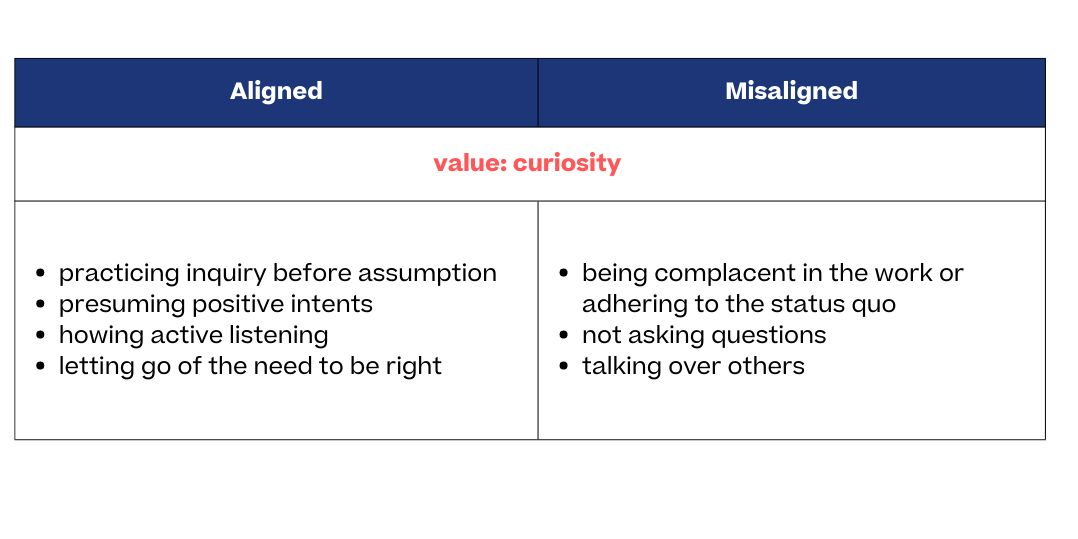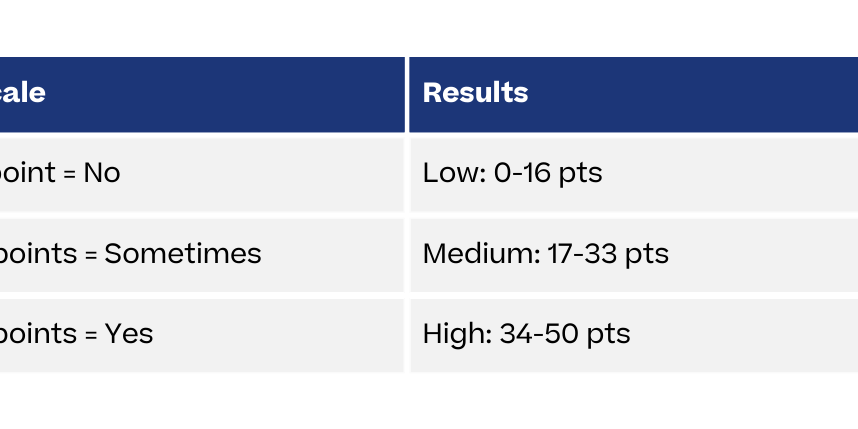Building the Foundations of Startup Team Culture
An in-depth tutorial and set of worksheets to help startup leaders establish a positive culture from day one.

Every Founder is responsible for the work culture they build—and failing to invest in that function early makes it much more difficult to set right later down the line.
While culture can seem more amorphous to some founders than functions like Go-To-Market or Finance, there is absolutely a repeatable, proven set of best practices startup leaders can employ to define and optimize workplace culture.
Here, Rebecca Price, Partner at early stage VC firm Primary, and Jennifer Zeckendorf and Kurt Landon from innovating human resources consulting firm Enspira have compiled what we see as essential resources and processes.
Why founding teams need to consider culture from the outset
While there are many reasons why it’s important to do this work sooner rather than later, in our minds, the top three are:
- You want to be intentional to define your culture and not have a culture emerge haphazardly. You’ll also want to be mindful of which aspects are firmly rooted and which may be more dynamic over time and at key inflection points.
- Behaviors defined can be used as standards for how employees show up, who you hire, and how you reward and/or recognize your team.
- Key business decisions made without human capital considerations (e.g. culture) can impact overall business outcomes.
What ‘vision & values’ entail, and how to establish it
Vision is where we’re headed, what we’re working towards, and what success looks like. Moreover, it prepares us for tomorrow. In essence, the vision is the clear and inspirational long-term desired change resulting from an organization's existence and work.
Core values are inherent and sacrosanct; they can never be compromised, either for convenience or short-term economic gain. By defining the specific behaviors, you are helping employees understand how to “live” the values, and integrate into employee-related processes such as recruiting, performance management, talent management, rewards & recognition, etc. As a leader, you should be ready to drive to action and stand by the values.
Ensure your team knows the “why” behind this work
Values form the basis for decisions the company makes and are what you stand for as an organization. As such, values:
- define what is acceptable and unacceptable to our co-workers, our customers, and our community
- are the heart of the culture
- reflect who you are which then affects what you do
- provide clarity for the workforce on what is expected
- can contribute to high engagement and commitment, driving retention and productivity
- inform hiring decisions
- create connection for employees to the organization; a core component of an employer brand
- create boundaries for accepted behavior
Values Activity
For leadership teams of three or more, complete this activity together, then share your final values with the rest of your employees for buy-in and refinement. If your organization is made up of ~10 employees, consider doing this exercise as one group. Use this worksheet to complete this activity.
Part 1
Use the following questions to better understand how you want your people to show up in their work, to team members, and to external stakeholders.
- What do we stand for? What are our non-negotiables?
- What draws people to work here? What behaviors make us want to stay here?
- As a founder (or senior leader), what actions will I take to show up for my team members and direct reports?
- What do we do better than other organizations? How can we hold ourselves to higher standards [than other organizations]?
Part 2
Reflect on the answers on your own or with a broader group and start to identify words or phrases that stand out to you. Boil down what you’ve noticed to five keywords or phrases, as these will be your “values'' for the purpose of this exercise. If you have trouble coming up with words or phrases on your own, take a look at this spreadsheet and see if any of the values listed encapsulate the behaviors you identified.
Part 3
After capturing your top 5 “values,” share them out with others in your organization. If you have a leadership team of 3 or more, share with that group before opening up to the broader organization. If your entire organization is ~10 people, share with everyone. Gather feedback on what resonates and what might be missing. Incorporate their feedback and continue to refine these “values” in Part 4.
Part 4
Now it’s time to think about how you and your team members will live your values. Use the table below to specify actions and behaviors that will and will not uphold each individual value. We’ve included an example below.

Part 5
You have established your values and identified desired behaviors for each one.
Going forward, you can embed them into your organization’s processes and systems to ensure you and your organization continue to live the values every day. This might include areas like talent acquisition, via candidate interview questions, or performance management, in terms of goal setting conversations—and we encourage you to come up with a few more examples on your own.
Putting a point on your mission (purpose)
When you get down to it, an organization’s mission is a purpose statement. Purpose, quite literally, is “the reason for which something is done or created or for which something exists.” Components of a purpose statement include:
- Contribution: the product or service (what we do)
- Customer: the target audience (whom we do it for)
- Distinction: what makes the product unique or why the audience should “buy” it over another (what is the benefit)
Example: Google “To organize the world’s information and make it universally accessible and useful.”
Purpose Statement Activity
We recommend doing this exercise with your leadership team. Ask participants to individually answer the questions below (give them 30-60 seconds so they are capturing first gut responses). One word or short phrases will suffice.
- Why does this team exist in the company?
- What would you say the top three key values of this team are / should be?
- What are three key words to describe the “how” of work we do/should do?
- What three key words do you want associated with the “brand” of the company?
- If this company is successful at what it’s supposed to do, how will you know?
- If this company fails at what it’s supposed to do, how will you know?
- What makes this company special and positively different from others?
- What will make you proud of this company if/when you’re successful?
- What legacy should we be building?
- If this company didn’t exist, what would be the consequences?
- If an elderly person or young child asked what we do, how would you answer?
In small groups or pairs, synthesize themes, common words, and the spirit of what was written. Together, draft one to three sentence purpose statements. Share as a large group and then combine/modify/enhance as needed. Here’s a worksheet you can use to complete this activity.
Defining your approach to diversity, equity, inclusion, and belonging (DEIB)
Diversity and inclusion aren’t just buzzwords. Research by McKinsey shows that fostering a diverse, inclusive environment makes your organization more effective, more successful, and more profitable.
However, hiring for “diversity” or underrepresentation alone is futile if you aren’t creating space in your organization to include differences. Belonging is the key to connecting people to one another and the workplace in a meaningful way.
DEIB defined
- Diversity: Refers to the range of identities, both outwardly visible and not (e.g. gender, race, ethnicity, religion, nationality, neurological, or sexual orientation)
- Equity: Recognizes that advantages and barriers exist, and is the implementation of processes and policies to address the imbalance
- Inclusion: Is how people with different identities are valued, leveraged, and welcomed within a given setting (e.g., team, workplace, or industry)
- Belonging: How an organization engages the full potential of an individual; where innovation thrives and views, values, beliefs are fully integrated
DEIB Reflection Activity
You can start the conversation by facilitating discussions with your leadership team and/or the broader organization around DEIB. Find out what matters to your organization and prioritize accordingly using this worksheet.
- What does diversity, equity, inclusion, and belonging at our organization mean to you?
- If you could implement one new DEIB program, practice or key decision to set the company up for sustained success, what would it be and why?
- Where do you think the company should focus efforts to become more diverse, equitable, and inclusive in future?
- What key phrases come to mind that would describe the desired future state of our DEIB program, practices, etc.?
Psychological Safety Activity
According to Simon Sinek, “a team is not a group of people who work together. A team is a group of people who trust each other.” Cultivating a psychologically safe team will enhance engagement, inspire creativity, improve wellbeing, create ambassadors, reduce turnover, and boost performance.
Look at the questions below and answer them on a scale of 1 to 5. This worksheet can be completed individually by any leader who manages people.
- Does your team have a clear set of goals before executing a project?
- Do people in your team ask questions during meetings?
- Can someone challenge an idea on your team?
- Are people in the team open to mistakes made by themselves or others and are they willing to learn from them?
- Do people in your team feel comfortable when they are together?
- Are people in your team open to helping each other?
- Is feedback a custom within the team?
- Is it safe to take a risk on the team?
- Does your team have respect towards each other and are appreciative of the skills that everyone possesses?
- Are your team members close and know about each other’s lives outside work?
Now, add up the points to see how psychologically safe your team is.

Leadership actions essential to DEIB
No matter how high your team scored in the last exercise, here are some actions you can take to improve psychological safety:
- Practice active listening and show (genuine) curiosity
- Take accountability and lead by example
- Practice empathy
Practice active listening and show (genuine) curiosity
- Show understanding by repeating what was said
- Encourage people to share more by asking questions
- If certain individuals rarely speak during meetings, actively ask them for their opinion
Take accountability and lead by example
- Ask for feedback
- Acknowledge your mistakes
- Be open to opinions that differ from your own
- Be approachable and encourage reports to ask questions
Practice empathy
- Encourage teams to share feedback with one another
- Help them learn how to respond to input from others
- Encourage teams and individuals to see feedback as a way to strengthen and build upon their ideas and processes
Next steps: Apply your mission, values, and DEIB approach
You’ve created the foundations for your culture, now you need to integrate them into your people processes and systems. Building your solidified mission (purpose), values, and DEIB principles into the following organizational elements creates a flywheel effect that reinforces the culture you’ve set out to build.
Attracting Talent
- Recruiting
- Interviewing
- Selection
- Employee Value Proposition
Developing Talent
- Onboarding
- Learning & Development
- Mentoring
Engaging & Retaining Talent
- Total Rewards
- Employee Engagement
- Performance Management
- HR Technology
- Offboarding
- Workforce Planning
- Succession Planning
Appendix: Worksheets
Below you’ll find the links to all of the worksheets included in this blog.
